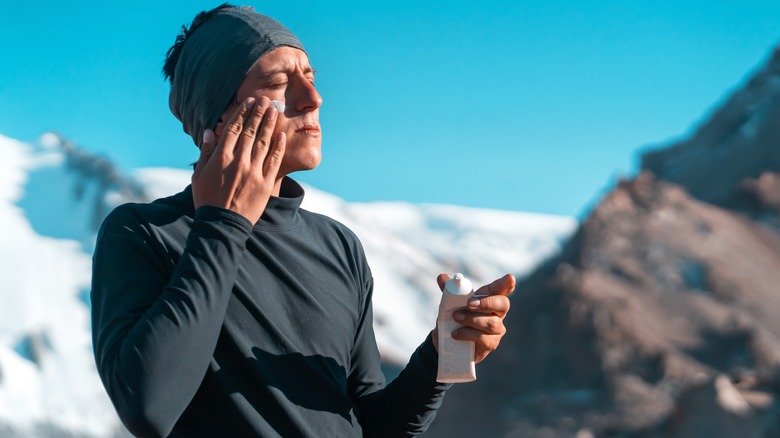How The Sun Can Affect People With Lupus
With over one million people in the U.S. estimated to have lupus, the Lupus Foundation of America estimates that 16,000 new cases emerge annually. Symptoms of the condition can include pain, hair loss, extreme fatigue, as well as cognitive and physical impairments. The most predominant symptom, however, is the presence of a facial rash across the cheeks, according to experts at the Mayo Clinic.
The development of this autoimmune disease may be influenced by one's family medical history, but external factors such as infection or certain medications can also prompt symptoms (via Mayo Clinic). What may be lesser-known, however, is that sunlight can also have an effect on individuals diagnosed with lupus. ScienceDaily points out that up to 60% of individuals diagnosed with lupus experience photosensitivity, or the emergence of scaly rashes as a result of exposure to UV rays from the sun.
The Lupus Foundation of America cites a bodily process known as apoptosis as possibly playing a role in lupus patients' photosensitivity. Responsible for the death and shedding of damaged skin cells (such as those injured by the sun), apoptosis seems to occur more frequently in those with lupus, leaving the body more susceptible to inflammation.
How those with lupus can protect themselves against UV rays
In addition, researchers from a 2018 study published in Science Translational Medicine found that immune cells known as Langerhans cells that reside in the topmost layer of our skin do not function as efficiently in those with lupus. To protect our skin from UV light damage, these cells function by activating protective molecules when exposed to sunlight. In those with lupus, however, these cells do not function as they should and elicit a weaker molecule-activating response.
Because sunshine can evoke skin lesions for those with lupus (per Mayo Clinic), experts at Health suggest keeping skin covered by wearing a wide-brimmed hat as well as long sleeves and pants when outdoors. In addition, no matter the weather, wearing sunscreen with an SPF of at least 70 can also help protect against sun exposure. Remember to reapply your sunscreen at least once every couple of hours, or more if you are swimming or sweating.
Avoid spending time outside when it is sunniest during the hours of 10 a.m. and 4 p.m. and remember that snow, sand, or water can boost UV ray exposure. While inside, the use of UV blackout curtains can also help keep you protected. Because many individuals with lupus can also experience similar flare-ups in response to artificial light, those with lupus are advised against using tanning beds, warns Health.


